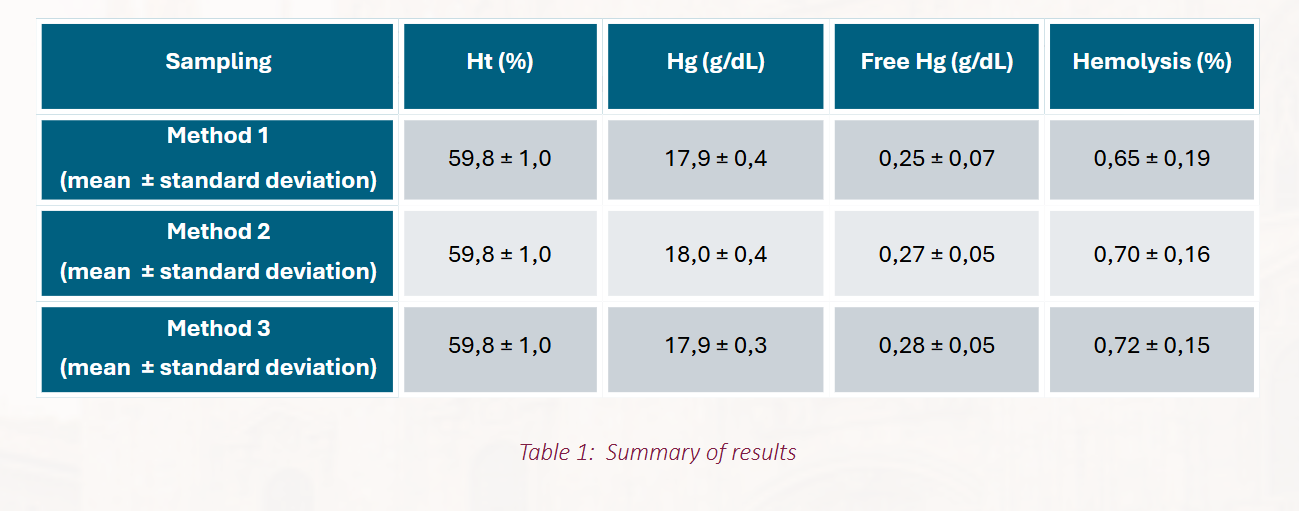Aim : This study aimed to compare sampling methods to understand their influence on hemolysis.
Discover the presentation of the study in video : https://youtu.be/0jt9SYscUDA
Authors
Sumian C**, Reichenber S**, Lagrange A**, Brebant Q**
**Research and Development, Macopharma, Mouvaux, France
Introduction
Understanding in vitro quality of red cell concentrates (RCCs) and ensuring compliance with regulatory standards requires sampling the product. However, no international standard currently defines sampling methods for RCCs, and the impact of each sampling method remains unclear.
Macopharma samples RCC using a PVC sampling pouch sterilized with beta irradiation. In this process, the RCC is mixed, and a sterile connection is made with the sampling pouch to ensure the absence of contamination. The sampling pouch is filled with RCC and emptied back into the RCC bag three times before 10mL of RCC is collected into the sampling pouch. The sampling pouch is then sealed, and the RCC sample is taken by cutting the PVC tube.
Typically, Canadian Blood Services’ NetCAD Blood4Research uses a spike coupler method to sample RCCs. However, an increase in expected hemolysis measurements was observed when netCAD employed Macopharma’s sampling pouch method for during a collaborative study.
Method
Eight RCCs stored in DEHT bags with PAGGSM additive solution were analyzed on day 54. Before sampling, the RCC was thoroughly mixed up and down. Samples were taken using three different methods. The first sampling (Method 1) was done by cutting the PVC tube of the bag, discarding 5 mL, and collecting a 5 mL test sample in a tube.
The second sampling (Method 2) was done by sterile docking a sampling pouch and directly filling the sampling pouch with 10 mL. The last sampling (Method 3) was done by sterile docking a sampling pouch, filling it with RCC and emptying it into the RCC bag three times, and then collecting 10 mL (i.e. Macopharma’s standard sampling method).
For Methods 2 and 3, the test sample was taken by cutting the PVC tube of the pouch. Analyses included hematocrit (Ht; HT200), hemoglobin (Hg; ABX ES60), free Hg (Hemocue) ,and hemolysis measurements. Paired t-tests were used to assess statistical significance.
Results
No statistically significant differences (p>0,05) in Ht and Hg levels were observed among the three methods. However, a significant increase in free Hg and hemolysis (+8 to 11%, respectively) was observed when using a beta-sterilized sampling pouch (p<0,05 between Method 1 and Methods 2 and 3).
No notable difference between 1 or 3 passes through the sampling pouch were observed (p>0,05 between Method 2 and 3)

Conclusions
The use of beta-sterilized PVC/DEHP sampling pouches significantly impacts RCC hemolysis, underscoring the need to standardize sampling and analysis procedures to ensure consistent and reliable results.
Acknowledgement
Study started thanks to the Canadian Blood Services’ NetCAD Blood4Research observation : Studies by Blood4Research Program | Blood.ca
Our solutions for safe blood components : Solutions – Macopharma